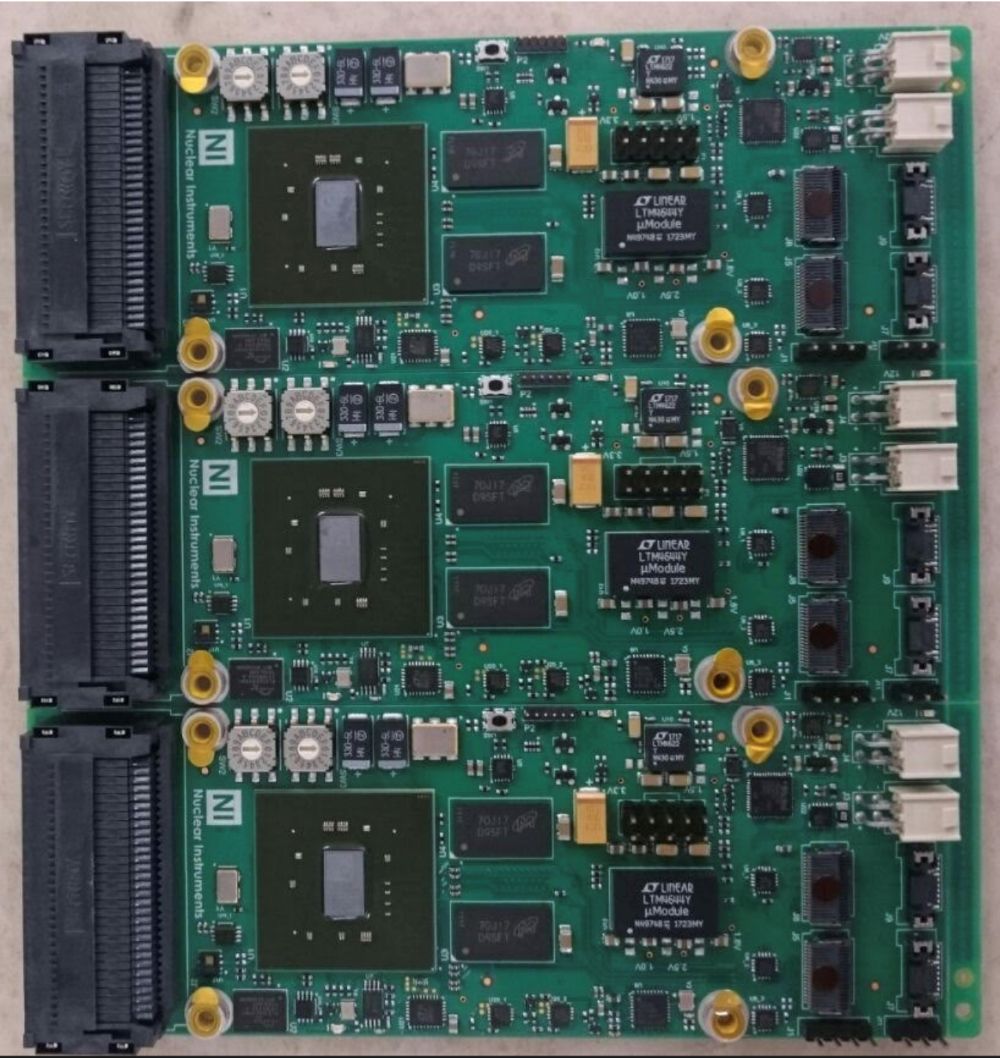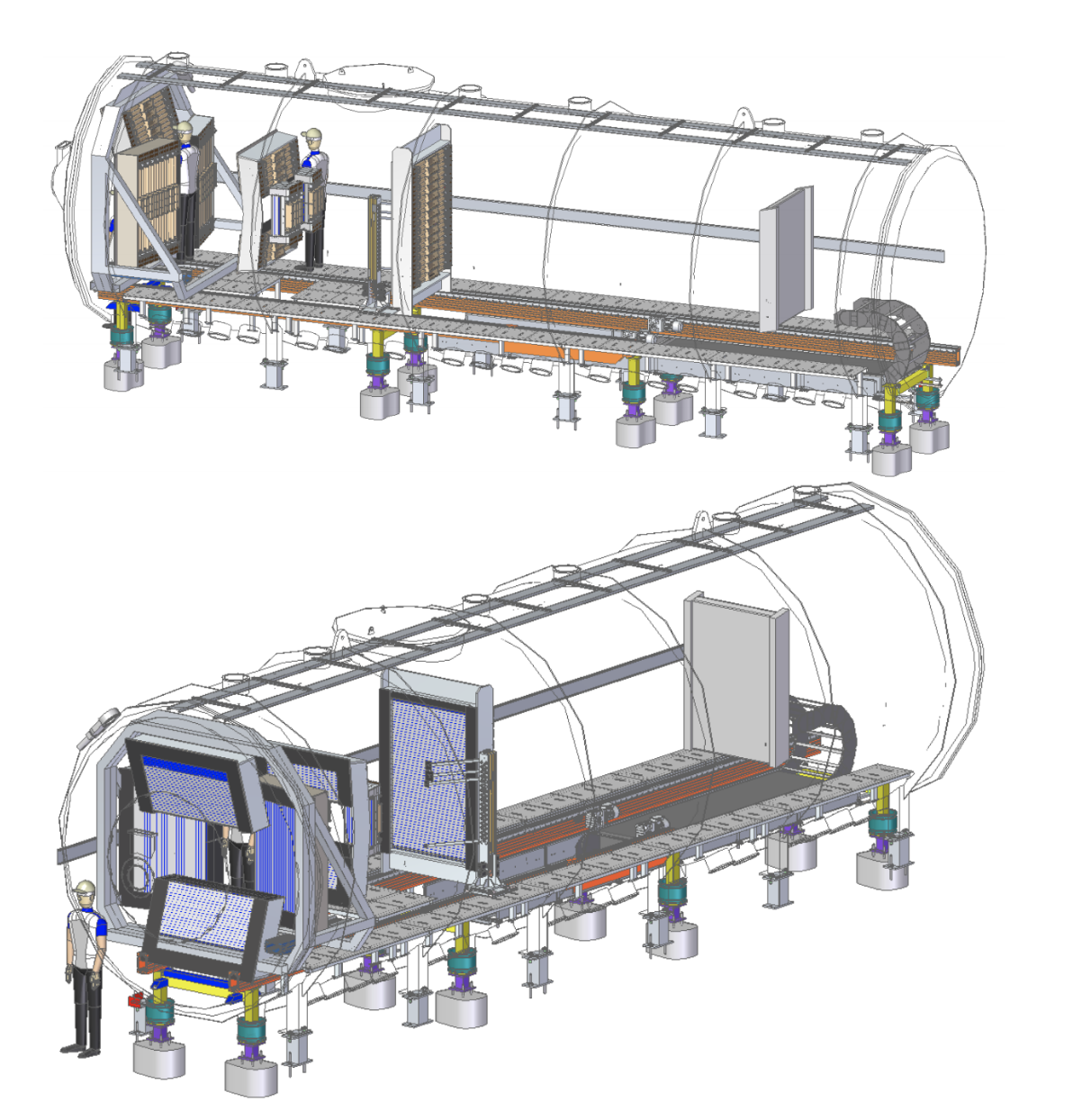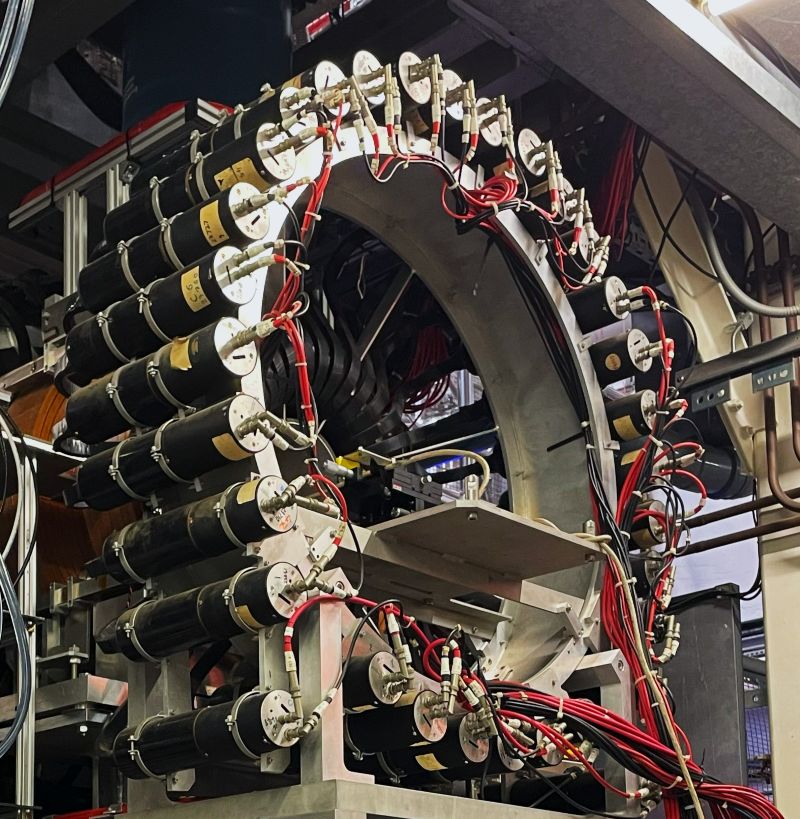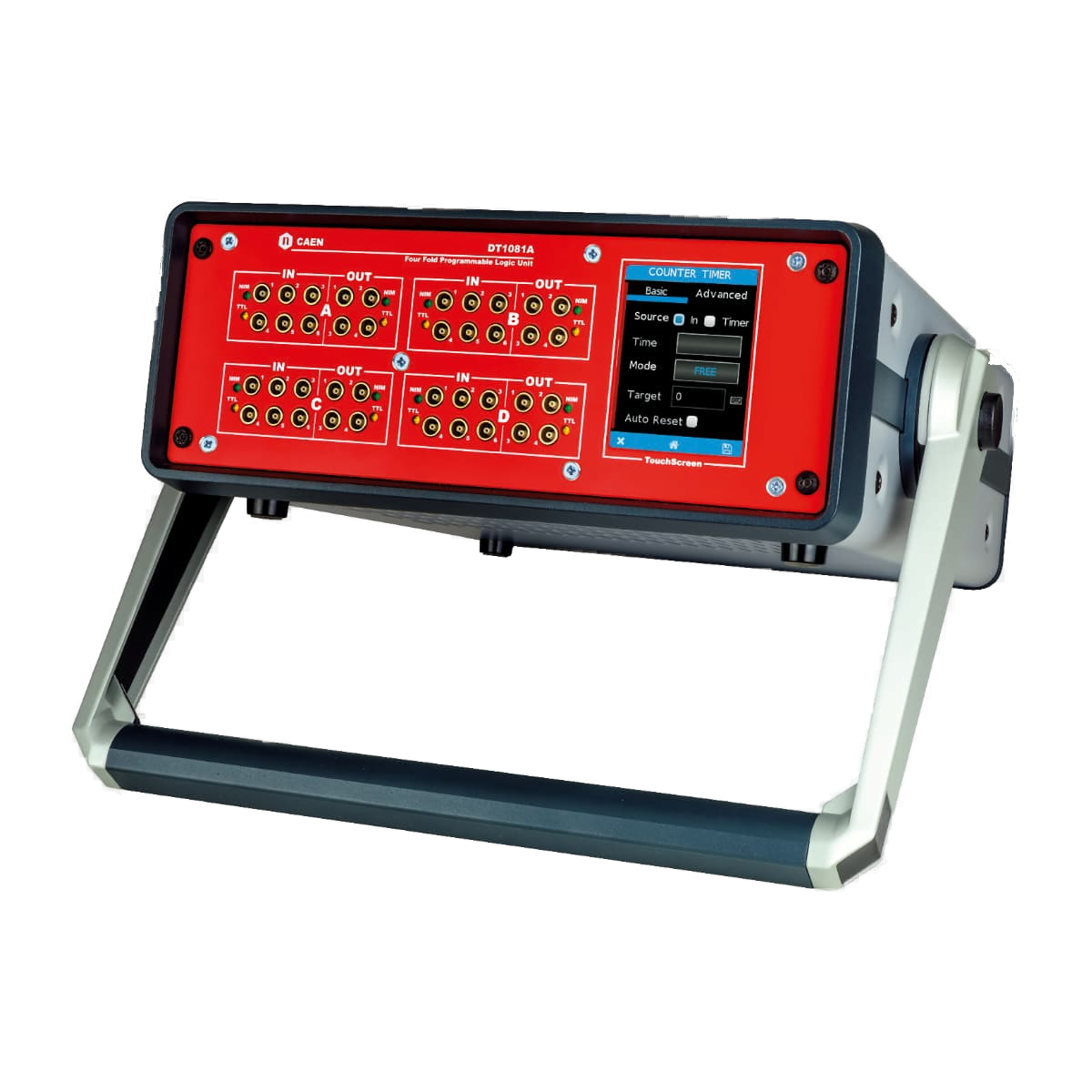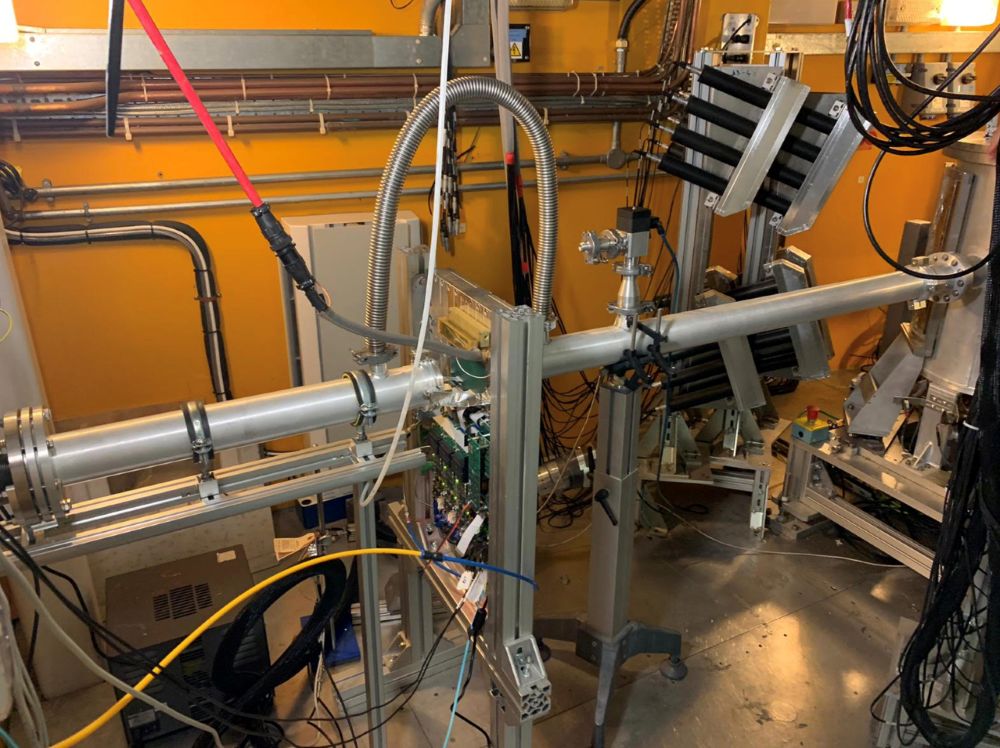
About the Project
Nuclear Instruments designed the readout system for a novel 2D detector used for neutron transmission measurements on the VESUVIO experiment at the ISIS Facility (UK). The detector is based on a thick GEM and features 384 readout pads (channels). The readout architecture consists of a series of distributed boards, each equipped with a Kintex-7 FPGA implementing 64 TDCs with a resolution of 0.5 ns, double-hit resolution of 4 ns, and 64-bit timestamping. Each FPGA interfaces with four GEMINI ASICs, which provide the analog front-end processing.
-
Date
July 2019

Nuclear Instruments

Universita degli studi di Milano Bicocca

INFN - Istituto Nazionale di Fisica Nucleare

CNR - Consiglio Nazionale delle Ricerche
Introduction
Neutron spallation sources require continuous development of new instrumentation to enhance experimental performance. In this context, the ability to accurately measure total neutron cross sections on the VESUVIO beamline at the ISIS Facility has been significantly improved through the use of a custom-designed transmission detector.
A pioneering double-ceramic thick GEM detector has been developed for this purpose. GEM-based detectors are widely adopted due to their excellent spatial resolution (<0.5 mm), high detection efficiency, MHz/mm² rate capability, and large-area coverage at low cost.
Nuclear Instruments’ Role in the Project
Nuclear Instruments collaborated with the University of Milano-Bicocca, CNR, and ISIS (UK) to develop and characterize a GEM detector composed of a 10B₄C cathode, two ceramic thick GEM foils, and a segmented anode. The system was tested on the VESUVIO beamline, where stability, gamma sensitivity, imaging capabilities, and sample analysis performance were assessed. The successful results confirm that ceramic thick GEM detectors are well-suited for thermal and epithermal neutron detection and will enable the user community to perform high-quality transmission measurements and determine more accurate total neutron cross sections of condensed matter systems.
The anode, located after the two THGEM foils, consists of 384 pads of varying size: 256 inner pads (3×3 mm²) and 128 outer pads (6×6 mm²). Signals from the anode are processed by GEMINI ASICs, a custom analog front-end developed specifically for GEM-based detectors. Each ASIC includes 16 channels, each with a Charge Sensitive Preamplifier (CSP) and a Discriminator. Unlike previous CARIOCA-based readouts—where thresholds could only be set in groups of 8 channels—GEMINI allows for per-channel threshold configuration, offering significant flexibility and improved noise rejection.
GEMINI ASICs support both Time-over-Threshold (ToT) and Time-of-Arrival (ToA) modes simultaneously. For this application, ToA mode was used to support neutron Time-of-Flight (ToF) measurements. To minimize noise from backscattered neutrons, material activation, and soft error probability, the electronic readout system was designed to be positioned outside the neutron beam path.
The DAQ system includes a custom FPGA board capable of real-time data acquisition and processing, avoiding system overload. Data are transmitted via a high-speed optical fiber link (up to 400 MEvents/s) to a remote Linux server for storage and analysis.
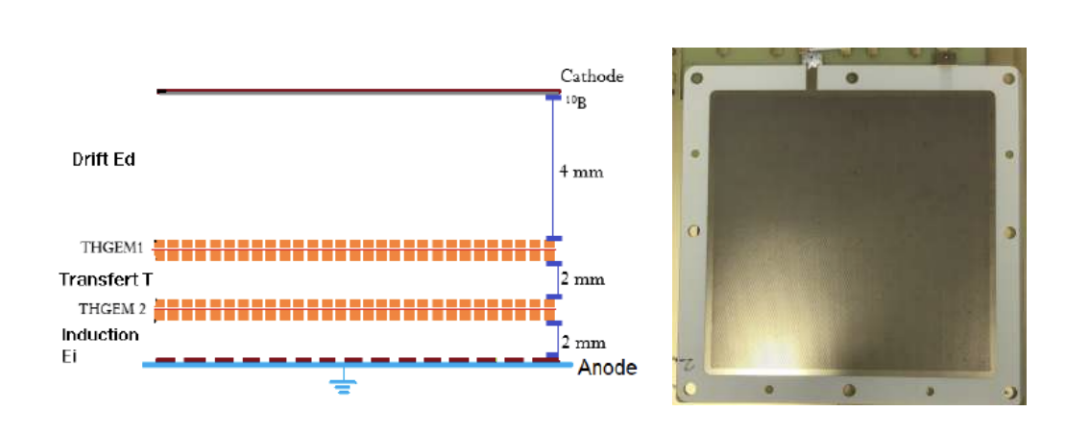
Left: Schematic layout of the detector, with a summary of distances between elements. Right: A gold ceramic thick GEM foil.
Left: Schematic layout of the detector, with a summary of distances between elements. Right: A gold ceramic thick GEM foil.
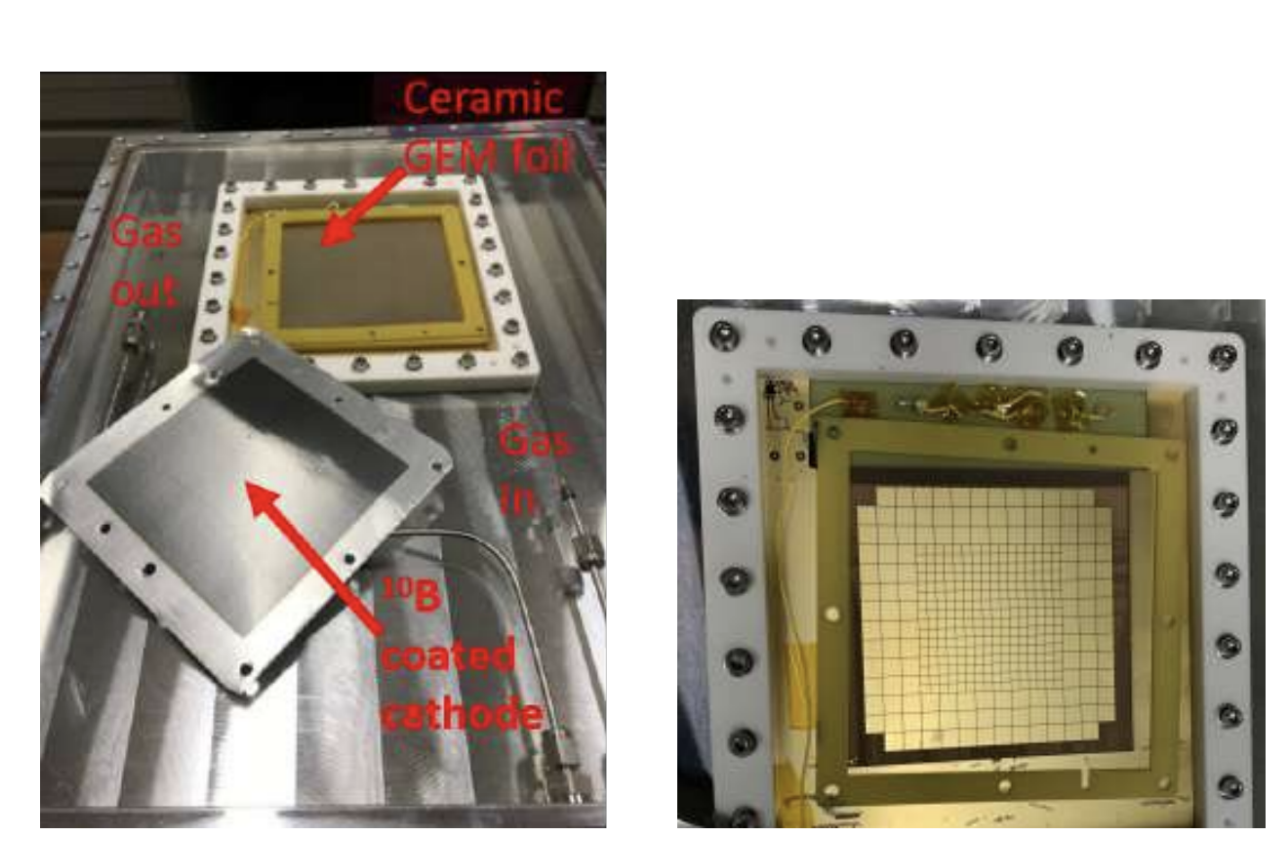
Left: Inner structure of the detector. Right: The anode made of 384 pads(256 3×3 mm2 inner pads and 128 6×6 mm2 external pads)
Left: Inner structure of the detector. Right: The anode made of 384 pads(256 3×3 mm2 inner pads and 128 6×6 mm2 external pads)
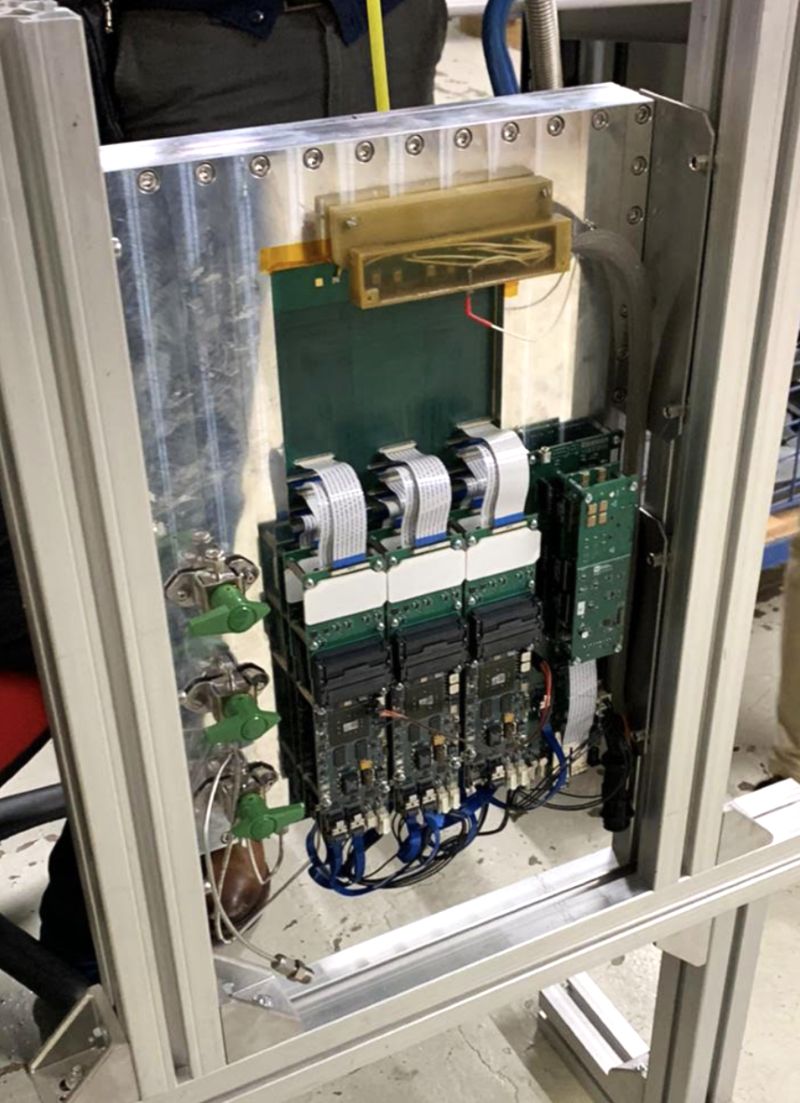
Readout electronics assembled on the back side of the detector.
Readout electronics assembled on the back side of the detector.
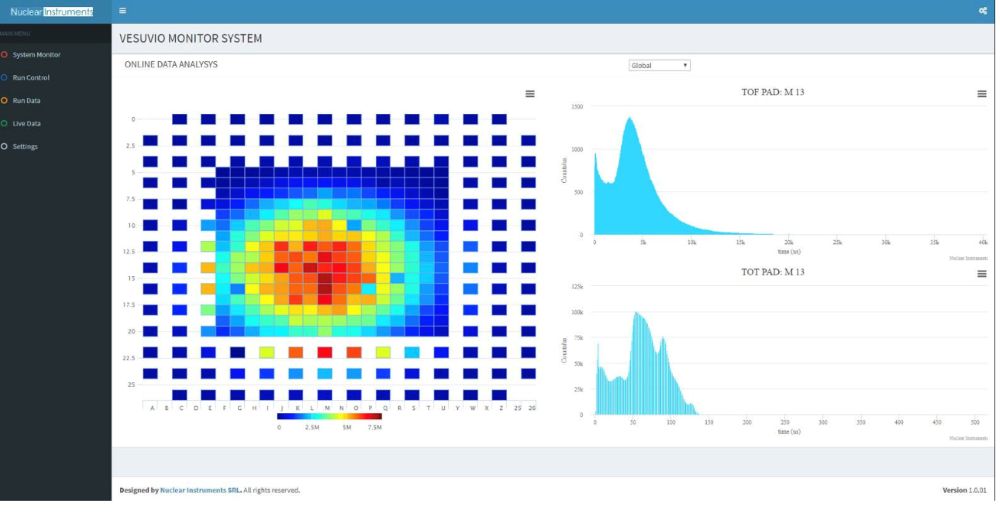
Detail of the web UI for the readout system. It is possible to observe the shape of the neutron beam and the characteristic time of flight spectrum.
Detail of the web UI for the readout system. It is possible to observe the shape of the neutron beam and the characteristic time of flight spectrum.
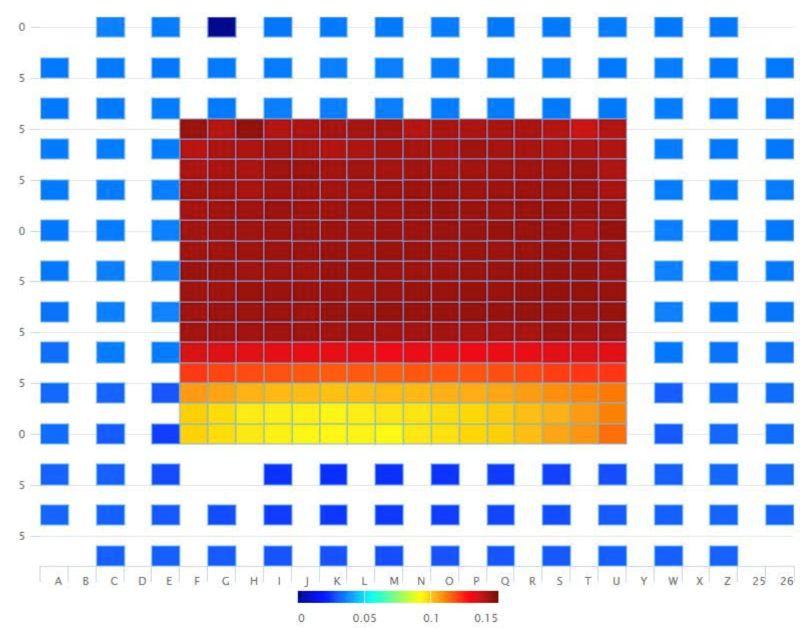
Image of a sample containing water. The image shows the neutron transmission through the sample. From this we can estimate the spatial resolution of the detector.
Image of a sample containing water. The image shows the neutron transmission through the sample. From this we can estimate the spatial resolution of the detector.
Readout System Architecture
The readout system designed by Nuclear Instruments consists of multiple distributed boards, each based on a Kintex-7 FPGA capable of handling 64 TDCs with 0.5 ns resolution, 4 ns double-hit resolution, and 64-bit timestamping. Each FPGA is connected to four GEMINI ASICs that perform analog signal conditioning and discrimination.
All FPGAs are interconnected via a 10 Gbit fiber optic link in daisy-chain topology, and are read out by a server through a custom-designed PCIe Gen3 8-lane card specifically developed to interface with GEMINI-based systems.
